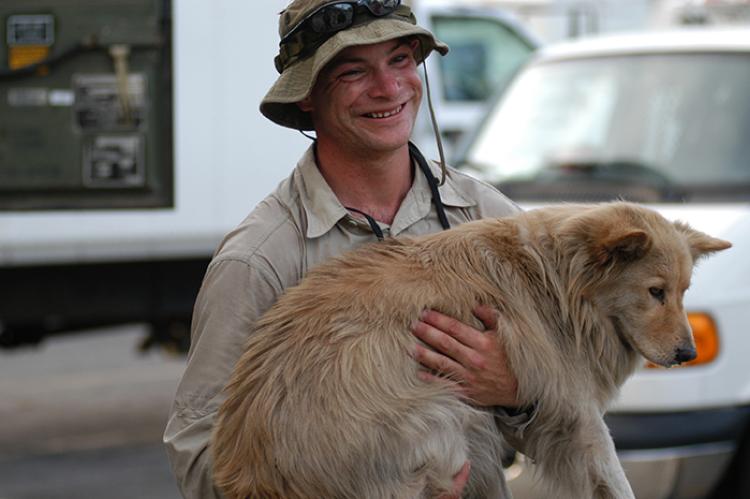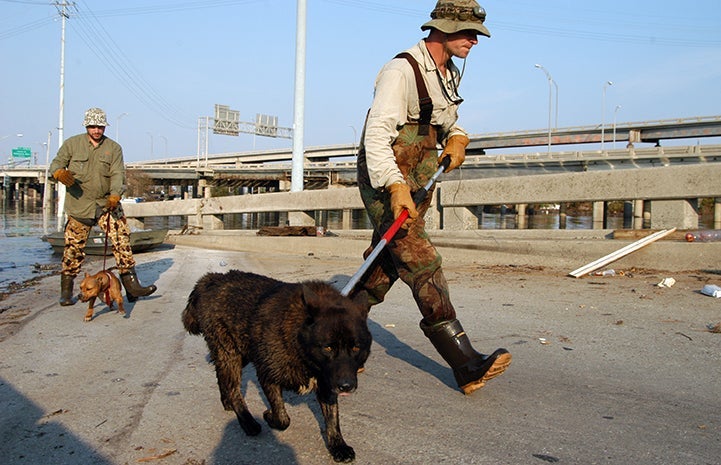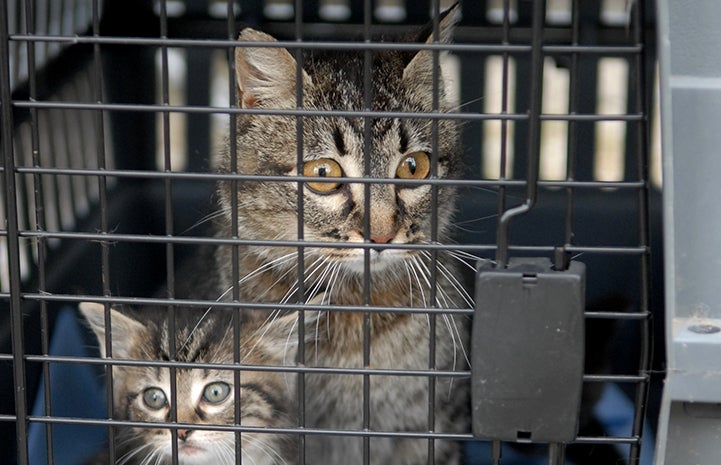How to Help Pets in Natural Disasters

To keep your pets safe during and after a natural disaster, such as a hurricane, wildfire, earthquake, or flood, it’s critical to be prepared. You’ll want to have an evacuation plan in place for both the humans and pets in your family. Do your research in advance to confirm logistical details. For example, know where pet-friendly shelters are located and have a pet emergency kit ready.
Here is some helpful information to know to ensure that you and your pets remain safe in a natural disaster.
Pet emergency kit
You should put together an emergency preparedness kit for all members of your family, including your animals. Each kit should meet the needs of each family member for a few days while an emergency is occurring. Your whole family should know where the kits are.
Here's a basic list of what to include in a pet emergency preparedness kit:
- Three- to five-day supply of pet food
- Water and food bowls
- Kennel or crate
- Copy of medical records, including vaccination records
- Extra medication for your animal (Don't forget to rotate the medication, so it doesn’t expire.)
- Reflective or brightly collared leash and collar with identification
- Pet first-aid kit (consult your veterinarian)
- Litter pans and pee pads
- Ziploc bags and trash bags (Roll them up and secure with a rubber band for storing.)
- Paper towels and washcloths
- Bottled water (rotate periodically)
- One or two emergency blankets (can be purchased at a camping store)
- Regular blanket (choose size to accommodate your pet)
- Flashlight with extra batteries
- Pillowcases or eVAC Dry Sack
- Duct tape
- Lighter
- Permanent marker
- Baby wipes
- Tarp or waterproof poncho
- Fun things for your pet, such as favorite toys and treats
You should also have current photos of your pets in case any become lost in the aftermath of a natural disaster. Dogs and cats should be current on their vaccinations, have properly secured identification tags, and be microchipped.
You can help rescue teams do their jobs more efficiently by having a rescue alert sticker with the number and type of animals in your home secured to your front door. If you evacuate with your pets, write that on the sticker so that emergency rescuers know everyone is safe.

Wildfire preparedness with pets
- Clear any dry brush or vegetation around your property to help minimize easy spread of a fire. Try to create a safety zone of 30 feet around the property.
- Check your insurance policy to determine coverage in the event that your property is impacted by a fire.
- Identify where wildfire evacuation routes are. If there are none, establish various evacuation routes because some roads might be inaccessible in a fire.
- Make a plan with neighbors to ensure that someone can care for or evacuate your pets if you’re unable to do so.
- Always bring your pets indoors at the first warning signs of a disaster.
- Evacuate early if there is fear of a wildfire spreading in your area.
- If you evacuate, cover your pets’ crates with sheets or towels to block the smoke and chaos.
- Identify all combustible materials in or outside of the house (e.g., oxygen tanks or canisters for medical purposes). Propane tanks should be shut off immediately to avoid any secondary hazards.

Hurricane and flood preparedness with pets
- Check with your local emergency management agency to see whether your area is prone to flooding.
- Check your insurance policy to determine coverage in the event that your property is impacted by flooding or wind damage.
- Consider cutting any dead trees or dead branches around your property that might fall and cause damage during a storm.
- Become familiar with evacuation routes for your area. Plan to evacuate early, as roads can become heavily congested with people trying to evacuate at the same time.
- Make a plan with neighbors to ensure that someone can care for or evacuate your pets if you’re unable to do so.
- Always bring your pets indoors at the first warning signs of a disaster.
- If you evacuate, cover your pets’ crates with a sheet to help keep them calm.
Disaster preparedness resources for pets
After Hurricane Katrina, the Pets Evacuation and Transportation Standards Act (aka the PETS Act) became law, ensuring that state emergency preparedness plans take individuals with companion and service animals into consideration. So emergency sheltering for disaster situations now has to have an animal component. Typically, this means there will be an emergency animal shelter set up in conjunction with human shelters, provided that the person brings the necessary items to care for their pet.
Here are some resources that can help you stay safe and meet your needs (and your pets' needs) during a natural disaster: